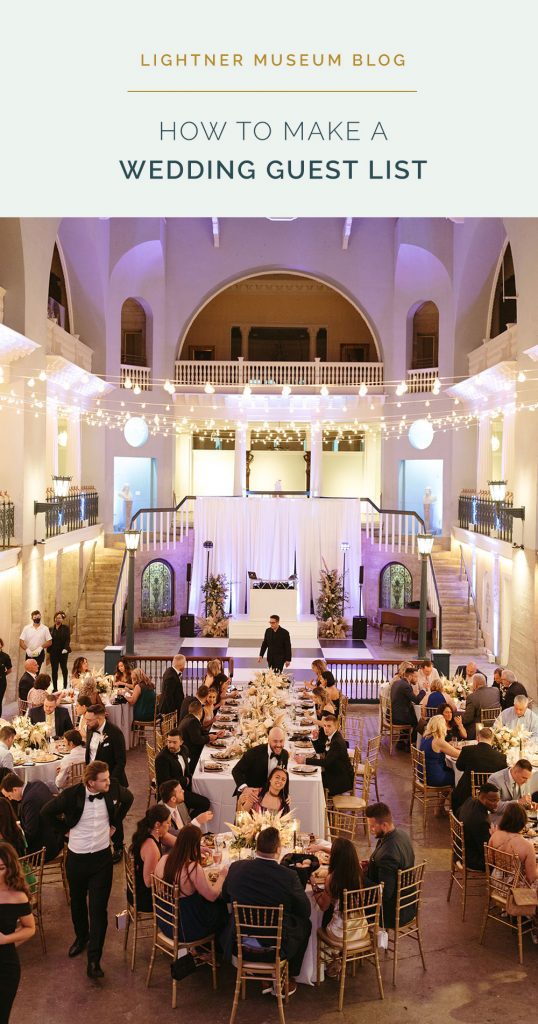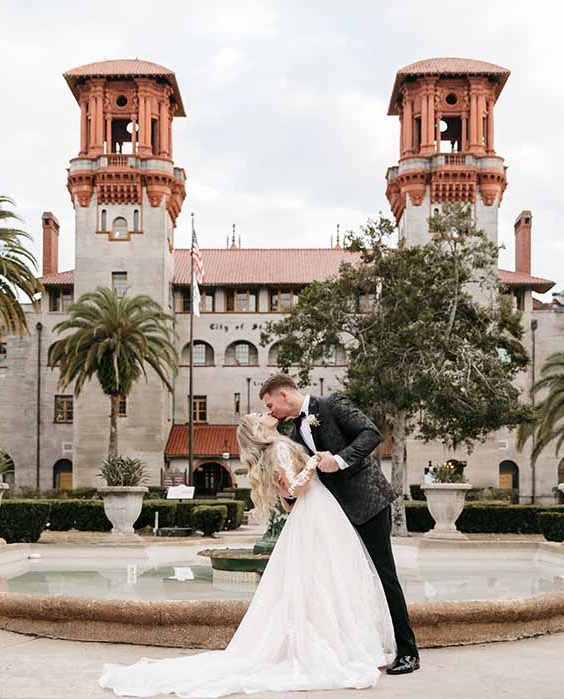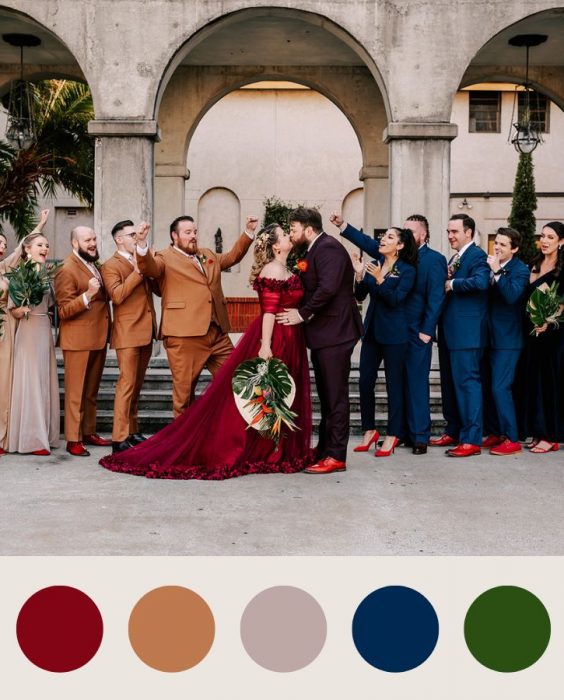Creating your wedding guest list can be one of the most anxiety-inducing tasks leading up to your big day.
How do you decide who makes the cut and who doesn’t? How do you prevent plus-ones you didn’t plan for? How do you keep the budget under control? And most importantly, how do you make sure the day goes the way you want it to?
At the Lightner Museum, our staff is dedicated to ensuring that your wedding day runs as smoothly as possible. That’s why we’ve collected our top tips for creating a wedding guest list so that you can start planning the wedding of your dreams.
Set a Budget
When you’re newly engaged, it can be tempting to jump right into all the “fun” aspects of wedding planning, but setting some boundaries should be one of the first things the two of you do.
It’s extremely easy to get carried away and end up way over budget, so setting some realistic budget expectations ahead of time helps keep you in check when you’re checking off those initial items on your wedding to-do list.
But what does this have to do with your wedding guest list?
The number of people you invite affects nearly every other cost associated with your wedding. If you know you can’t afford to break the bank, you should consider limiting the number of people on your wedding invite list.
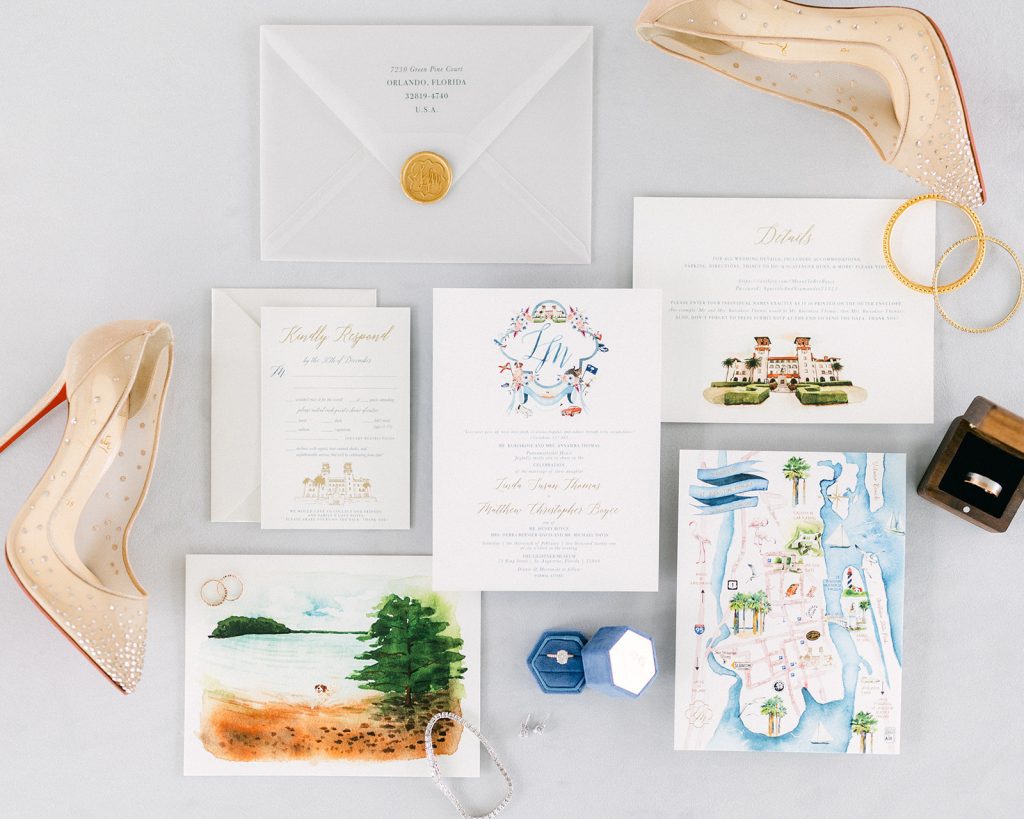
Wedding invitation photo courtesy of Nate Puhr Photography
Make Your Wedding Guest List Before Contacting Wedding Venues and Other Vendors
Ideally, you should have your wedding guest list before you start looking at venues. That way, you can rule out the locations that are too small (or too big) to hold everyone comfortably.
Your guest count may also help you determine which package (or packages) are best suited for your wedding. For example, at the Lightner Museum, we have packages for 100 guests or less and packages for up to 225 guests. Make sure to discuss your guest count with the venue before you tour.
You’ll want to have an approximate headcount when shopping for other vendors as well. It’s much easier to get quotes when you know how many guests you’re going to have. Florists, for example, are going to need to have an idea of the number of tables at your reception in order to plan for centerpieces.
Some elements of wedding planning will also require you to have a guest count based on the age (or age group) of your guests. Wedding caterers often charge less for childrens’ meals, and bar services will be based on the number of guests over and under 21.
Pro Tip: During early phases of planning, most vendors are aware that you won’t have an exact guest count. Quotes and initial deposits are typically based on approximations. Later on in the planning process (often about one month prior to the big day) they will request a final guest count.
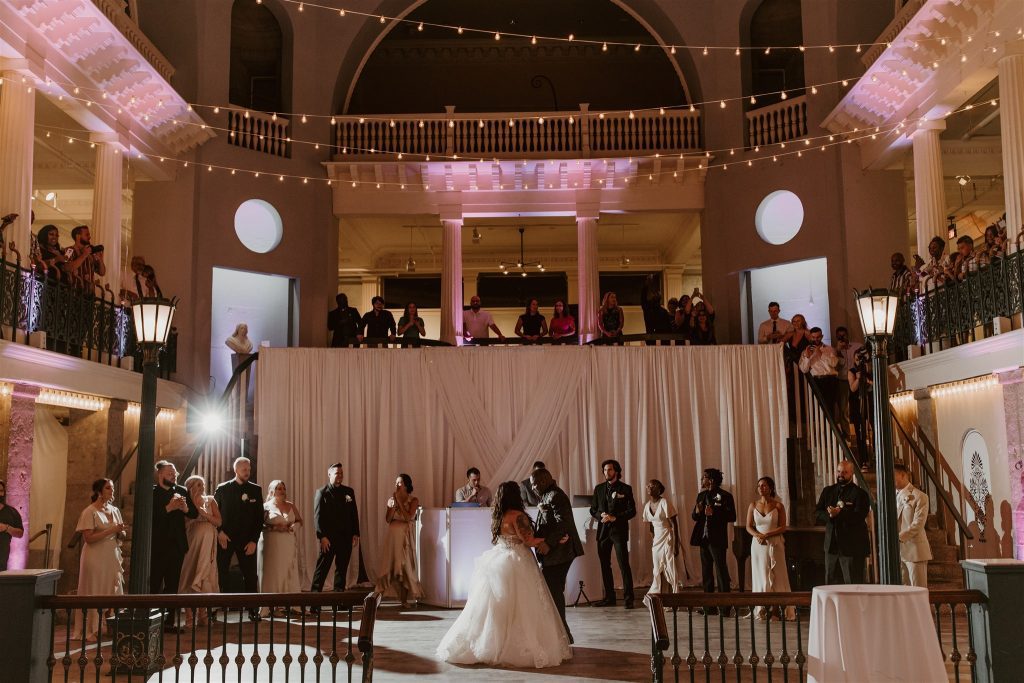
Brittany and Mikeal’s Lightner Museum wedding | Photo courtesy of Portraits by Paige
Make More Than One Guest List
When you first embark on your wedding plans, it’s a good idea to have more than one guest list.
The first list should include the friends and family you would never consider leaving out of your special celebration. The next list should be made up of the people you would love to include, but only if possible.
If the budget is starting to get out of control or you fall madly in love with a smaller venue, you can narrow down the guest list easily.
Have a Protocol for Plus-Ones & Kids
Deciding whether to allow your guests to bring a “plus-one” or not is totally up to you—just make sure you enforce the same rules across the board.
It’s common courtesy to extend a plus-one invite for those who are married, engaged, or living together, as well as any significant others who you have met and spent time with.
Similarly, you should also make a final determination regarding whether children are invited to the wedding. Many couples nowadays are opting to have adults-only weddings. Some make exceptions, but only for kids in the wedding party. Other couples welcome children of all ages.
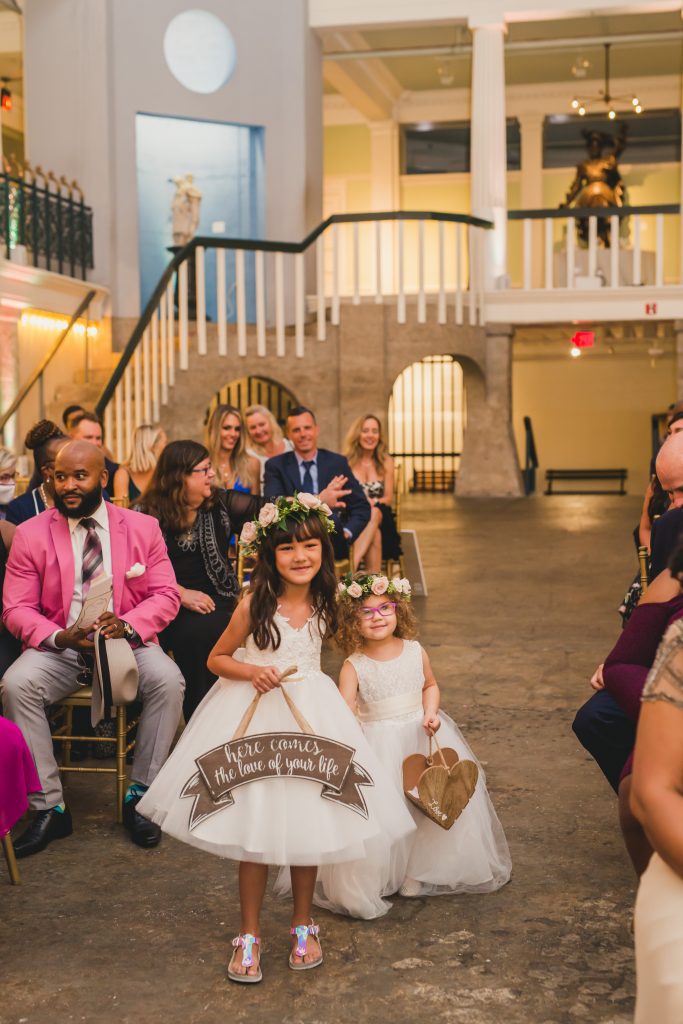
Maureen and Jonathan’s Lightner Museum wedding | Photo courtesy of Nicole Piper Photography
So how do you clearly communicate to your guests who is invited and who isn’t?
One idea is to list each invited guest’s name on the RSVP card as a checklist. This is a polite hint that “write-in candidates” are not permitted.
Another common method is to address the invitations in a way that leaves no room for mistranslations. If you’d rather not include your cousin’s new girlfriend, address the invite simply to “Mr. Robert White.” If the girlfriend is welcome, you can address it to “Mr. Robert White & Ms. Katie Hammond.”
Unidentified plus-ones can simply be labeled as “guest”: “Mr. Robert White & Guest.”
If plus-ones or children are not indicated on the invitation, it should be understood by guests that children or plus-ones are not invited. However, you may also want to include details in the important wedding information section of your wedding website. If your wedding is adults-only, you can even go the extra step and recommend babysitting options in the area.
The choice of who to invite to your wedding is completely up to you. Just be honest and tactful with your guests as early on as possible, so they can make informed decisions about attending the wedding and making plans prior to the big day.
Narrowing Down Your Wedding Guest List
What happens if your wedding guest list is still too big?
Here is a list of people you can safely remove without breaking the rules of etiquette:
- Friends and family you haven’t seen in years: Just because you went to their wedding 10 years ago doesn’t mean you have to invite them to yours.
- Coworkers: It’s a slippery slope: you invite two, and the next thing you know, the whole office is there. Our advice is to only invite the coworkers you would still be friends with, even if you didn’t work together.
- Neighbors: Unless your neighbors fall into the “close friends” category, don’t feel obligated to add them to the guest list.
- Friends of your parents’: This one can be tricky, especially if your parents are helping foot the bill for your wedding. At the end of the day, this is your wedding. If you’ve never met these people or wouldn’t consider them “family friends,” you shouldn’t feel obligated to invite them. If your parents are contributing financially, have honest conversations with them early on about who they feel is important to include on the guest list, and how this may affect the overall budget.
A good rule of thumb? Don’t invite anyone solely out of guilt. Your wedding is a special day that you should be spending with those you love and care about.
Conclusion
Ultimately, your wedding is about the two of you. Your wedding guests should be the people that you are most excited to have with you as you celebrate your love and commitment to each other.
Whether you want an intimate wedding or prefer to be surrounded by a large group of family and friends, the Lightner Museum’s combination of historic romance and modern elegance will provide the perfect backdrop for any size wedding.
Contact us today to learn more about availability, pricing, and how we can help make your day spectacular.
Pin this post for later!
Pinterest image photo credit: We are the Bowsers
Blog header photo credit: Angelita Esparar Photography

